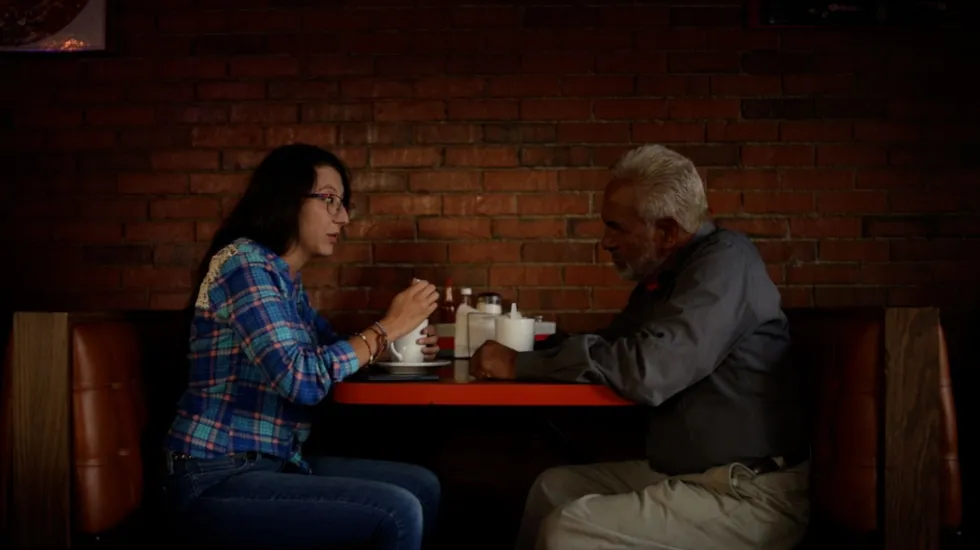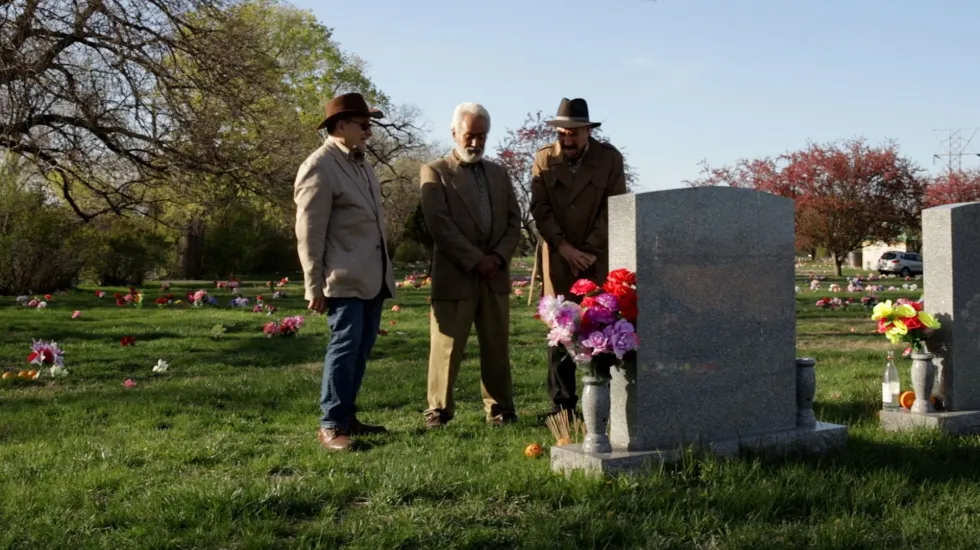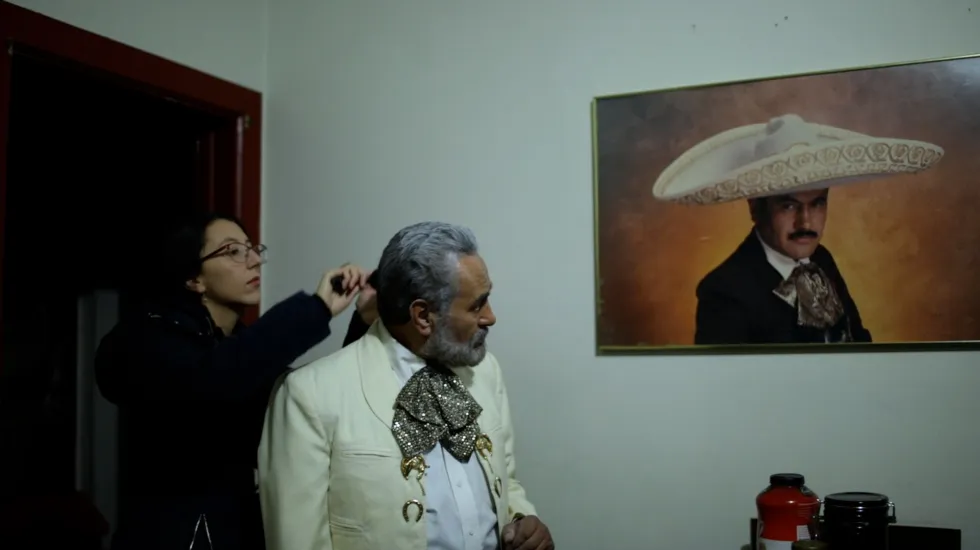
Inspired by immigrants who yearn to one day return to their homeland but never make it back, playwright Roma Díaz and director Enrique Gaona Jr. created “Bye Bye Chicago,” one of this year’s featured Chicago Latino Film Festival selections.
The festival celebrating global Latino short films, documentaries, and full-length features is in its 38th year. “Bye Bye Chicago,” by the first-time filmmaker duo, is making its world premiere at this year’s festival.
The film, starring Roberto Díaz Blanquel and Luisa Franco, was filmed entirely in Chicago, finding its backdrop in Little Village, Pilsen, and Humboldt Park.
Dalia (Franco) is a young college student from Colombia who befriends her elderly neighbor, Miguel (Díaz Blanquel). Though reluctant at first, lonely Miguel slowly begins to accept what Dalia is offering him: companionship and a sympathetic ear. Dalia finds things they have in common, like his love of music, as he once dreamt of becoming a famous singer in Mexico before coming to Chicago over 30 years ago.
Dalia takes him to his friends’ homes, where they drink beers while reconnecting, catching up, and sharing tales from their youth. Miguel is happy again, as he has no family that he stays in contact with regularly.
Eventually, Miguel and his friends visit their old friend Cuco’s grave. They confront the reality of their impending deaths and even chastise Cuco for leaving them.

The film essentially captures the realities faced by elderly immigrants in Chicago who are lonely: soon, they will die. Many will be buried here, and with their relatives living in faraway countries and their close friends long gone, no one will leave them their flowers.
But at least Miguel has Dalia.
Dalia and Miguel’s characters juxtapose each other in their age and country of origin. Although they are both immigrants, those stories are also very different. While Miguel came with no papers, Dalia came on a student visa to study archaeology.
Their differences make them stronger, and Dalia, who never met her father, is able to connect with Miguel in a way that a father and daughter would.
Eventually Dalia finishes her studies and returns to Colombia. She, too, says “bye bye” to Chicago.
Díaz, who operates Tecolote Theater Company in Little Village, cast the film entirely with actors who have worked with him previously.
When he first arrived in Chicago from Michoacan, Mexico, 23 years ago, Díaz worked doing a little bit of everything with various theater groups around the city. After some of the people he worked with expressed interest in his directing skills, he started Tecolote in 2006.
Since then, Díaz has produced theatrical shows entirely in Spanish all over Chicago.
It was only after securing interest from the actors, Díaz said, that he began working on dialogue for them—a bit of a backwards approach that is commonly executed in independent films.
He made sure to cater each role to the personalities and strengths of the people they were being portrayed by: Díaz Blanquel did spend time as a mariachi singer in the city.

“I know some friends that have already … passed away. I talked many times with them and they told me of their desire to return to their country—many of them Mexicans, by the way,” Díaz told the Sun-Times.
The film consists of plenty of long shots that help audiences observe the pair while they share coffee and go on drives together. Much of the cinematography is thanks to director Gaona, 20, a third-year film student at DePaul University.
The filmmakers first met 13 years ago, when Gaona was very young, because their families had grown close in friendship. Gaona had known that Díaz was a playwright, so the cinematographer approached him with a special request: write a script that can be made into a short film.
In writing the script, Díaz thought about the “many friends who come with their dreams” and believe that here they are going to progress, that they are going to have a better life.
“But most importantly, they always had in mind that ‘I want to go back, I am going to go back to my country,’ ” said Díaz.
“Some of them went back and others did not make it, they died. Some were sent to be buried there, but others ended up being buried here. And that is how the story was born— that desire that they wanted to go to be buried in their country or at least that when they died they would be sent there and they did not even achieve that.”
After Díaz finished the script, they realized that his story could instead be made into a feature film. This was in 2019, and they immediately got to work.
When Gaona first saw the script, he was very intrigued. “Although I am not an immigrant, I listen to stories of my parents, my grandparents, my uncles, my aunts, and it is something that I could relate a lot to,” Gaona told the Sun-Times.
From there, Gaona and Díaz were able to hire a crew and even got help from DePaul. Goana’s mother, a stylist, did all of the makeup and costumes for the film.
As many productions around the world came to a halt in March 2020, so did “Bye Bye Chicago,” which was not completed until 2021. The filmmakers are excited to finally share the film’s world premiere with family and friends.
“Bye Bye Chicago” can be seen in-person for its worldwide premiere on Sunday, May 1, at 3:45pm at the Landmark’s Century Centre Cinema in Lincoln Park. It’s available virtually from April 27 to May 1.







